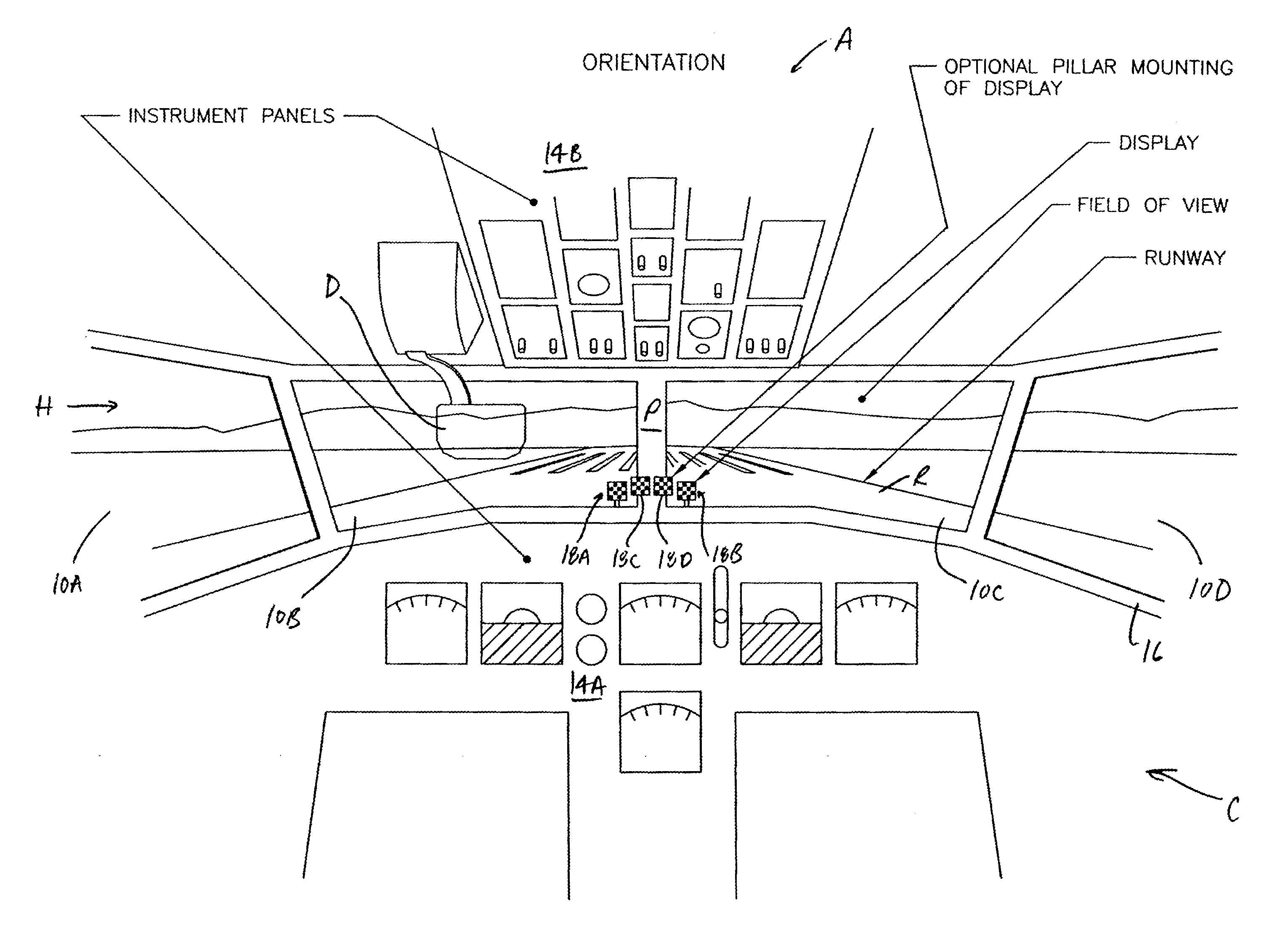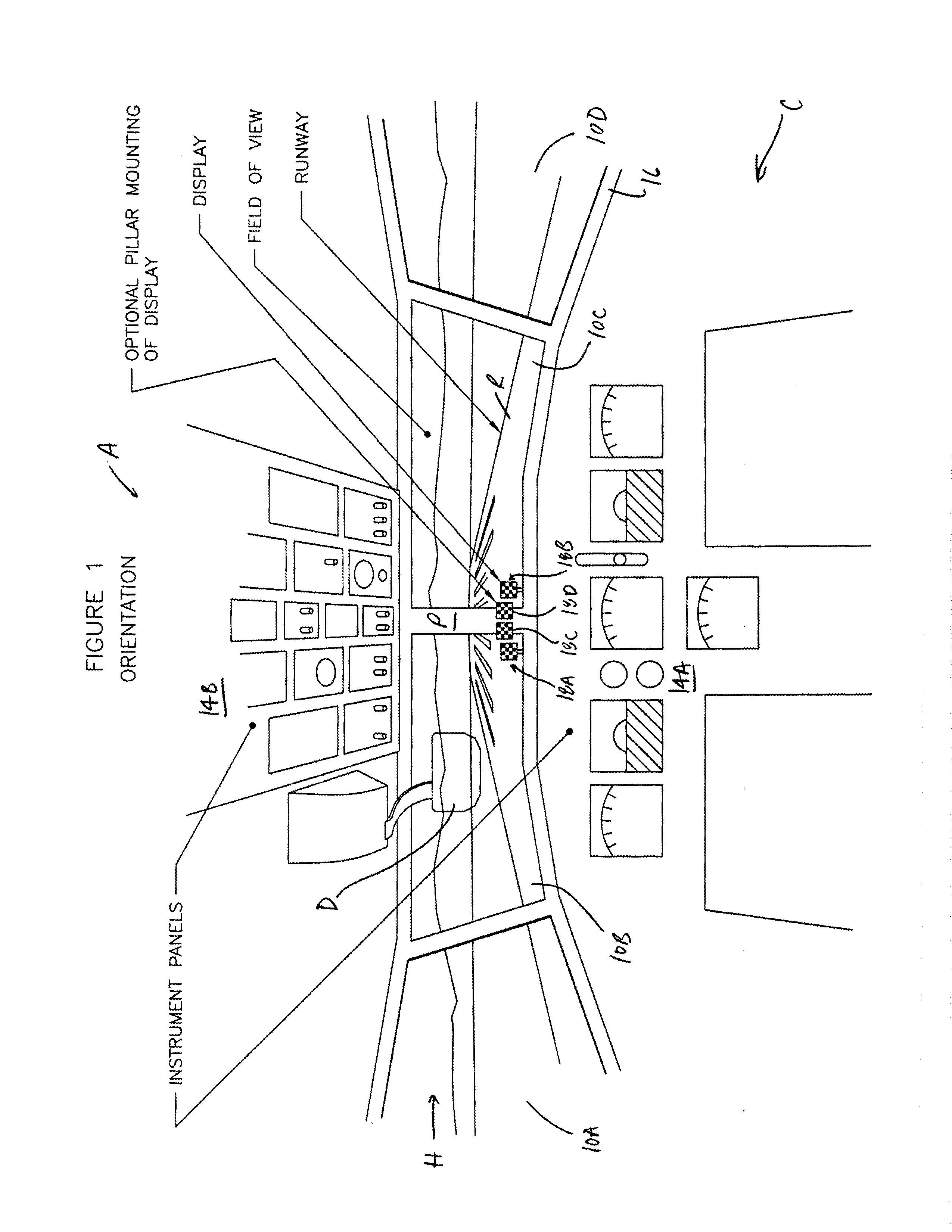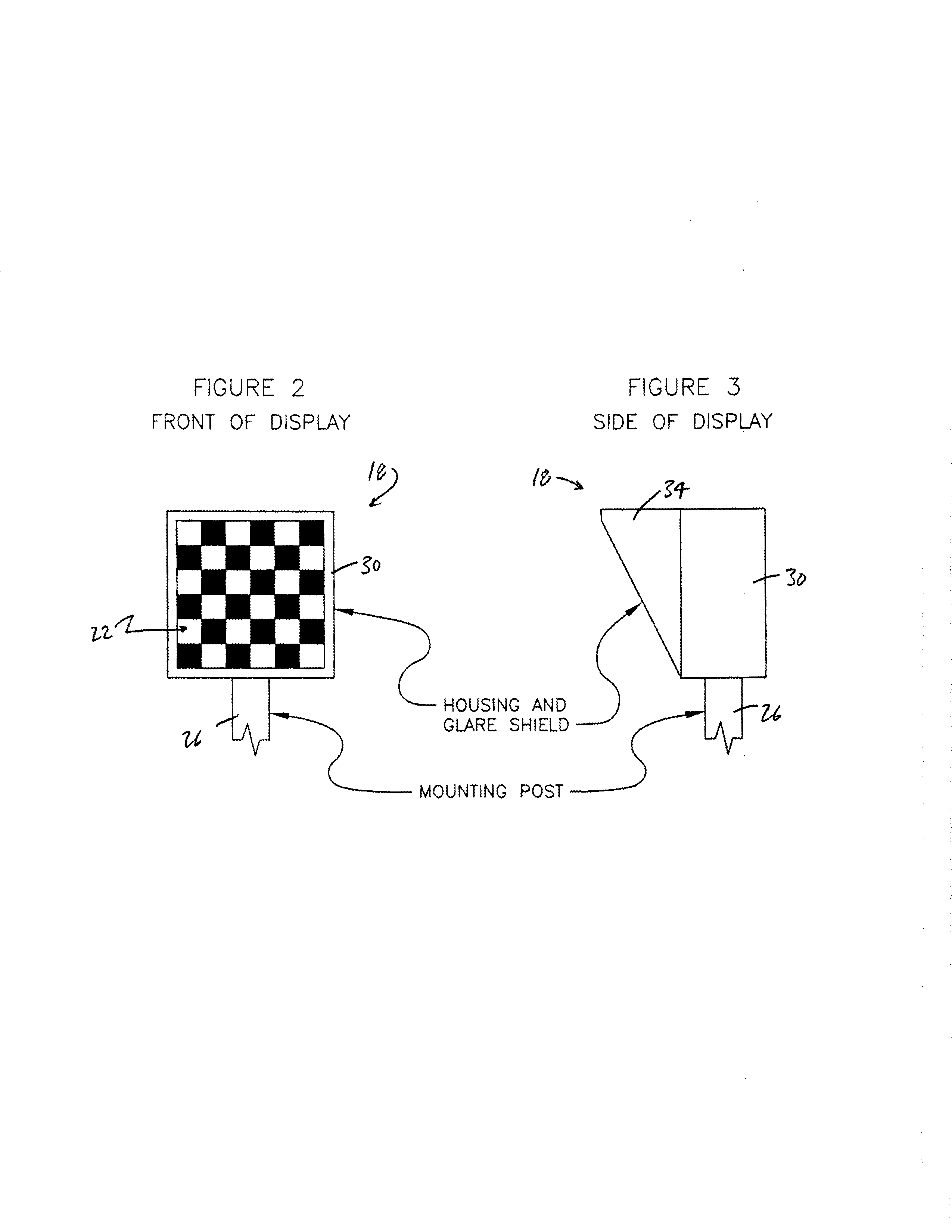Vehicle operator display and assistive mechanisms
- Summary
- Abstract
- Description
- Claims
- Application Information
AI Technical Summary
Benefits of technology
Problems solved by technology
Method used
Image
Examples
Embodiment Construction
[0035]Depicted in FIG. 1 is a portion of a cockpit C of an exemplary aircraft A. Visible in FIG. 1 within cockpit C are windows 10A-D, panels of instruments 14A-B, main glare shield 16, and one or more alerting devices 18 (see also FIGS. 2-3). Also visible in FIG. 1 outside cockpit C are runway R and horizon H. Although FIG. 1 relates to an aircraft A, it alternatively could show portions of a car, truck, bus, or other ground-based vehicle approaching, for example, a roadway or a boat approaching an area of water.
[0036]As illustrated in FIG. 1, the field of view of a pilot (whether seated to the left or right of the center of cockpit C) of aircraft A includes forward-looking windows 10B-C for visual acquisition of the runway R. Windows 10B-C are the primary visual source for information relating to the operational control of the aircraft A while it is in the process of decelerating. Accordingly, at least one of alerting devices 18A-B preferably is located within the pilot's field of...
PUM
 Login to View More
Login to View More Abstract
Description
Claims
Application Information
 Login to View More
Login to View More - R&D
- Intellectual Property
- Life Sciences
- Materials
- Tech Scout
- Unparalleled Data Quality
- Higher Quality Content
- 60% Fewer Hallucinations
Browse by: Latest US Patents, China's latest patents, Technical Efficacy Thesaurus, Application Domain, Technology Topic, Popular Technical Reports.
© 2025 PatSnap. All rights reserved.Legal|Privacy policy|Modern Slavery Act Transparency Statement|Sitemap|About US| Contact US: help@patsnap.com



